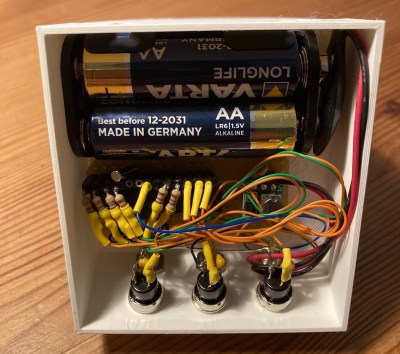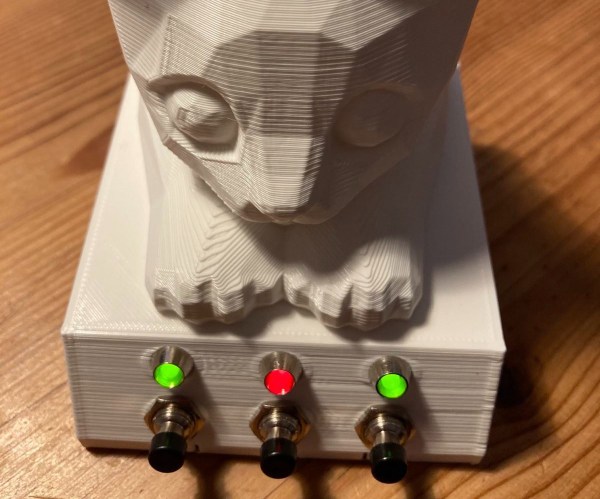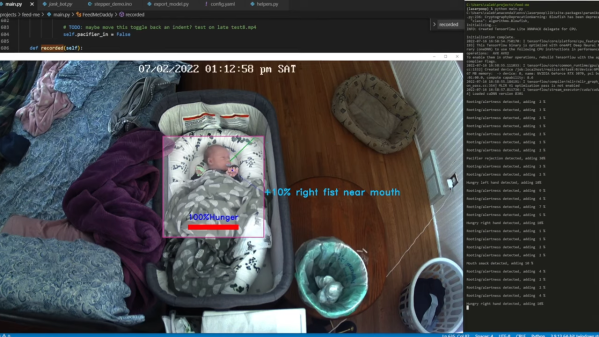When you have three cats and three humans, you have one problem: feeding them on a schedule without over or under feeding them. Even if there was only one human in the equation, the Cat-o-Matic 3000 would still be a useful tool.
 Essentially, it’s a traffic light for cats — where green means you are go for feeding, and red means the cat was just fed. Yellow, of course, means the cat is either half-full or half-empty, depending on your outlook.
Essentially, it’s a traffic light for cats — where green means you are go for feeding, and red means the cat was just fed. Yellow, of course, means the cat is either half-full or half-empty, depending on your outlook.
The brains of this operation is an ATmega88PA leftover from another project. There’s a no-name voltage regulator that steps up the two AA cells to 5 volts. Timing comes from a 32 kHz crystal that allows the microcontroller to stay in power-saving sleep mode for long periods of time.
Creator [0xCAFEAFFE] says the firmware was cobbled together from other projects. Essentially, it wakes up once per second to increment the uptime counter and then goes back to sleep. Short-pressing a button shows the feeding status, and long-pressing it will reset the timer.
Wanna make a cat status indicator without electronics? Give flexures a try.














